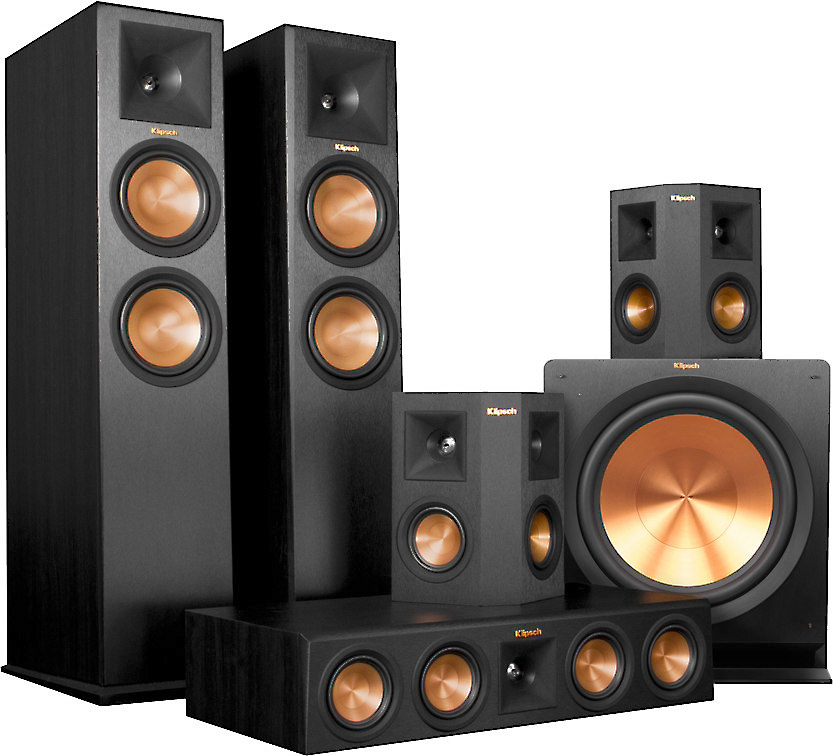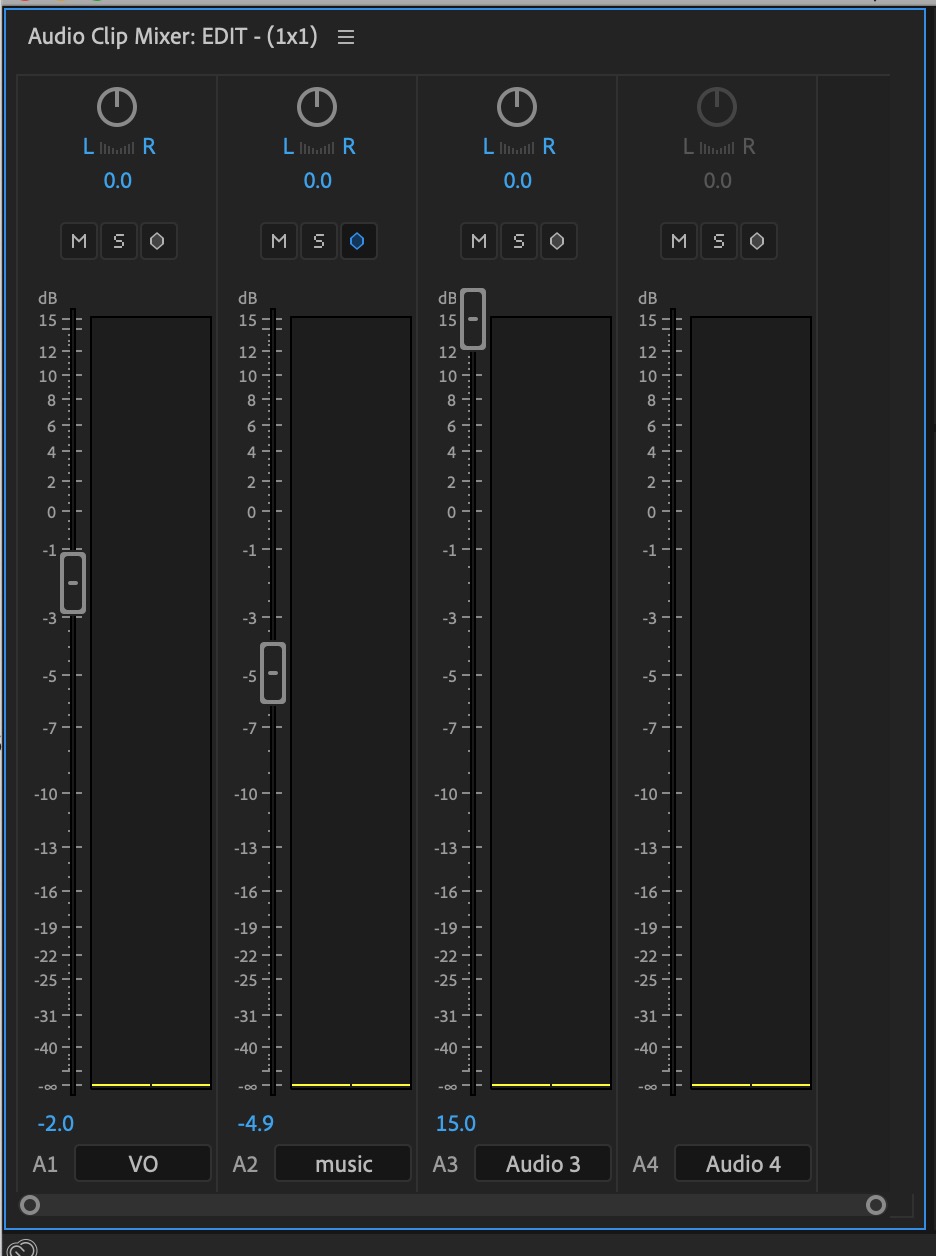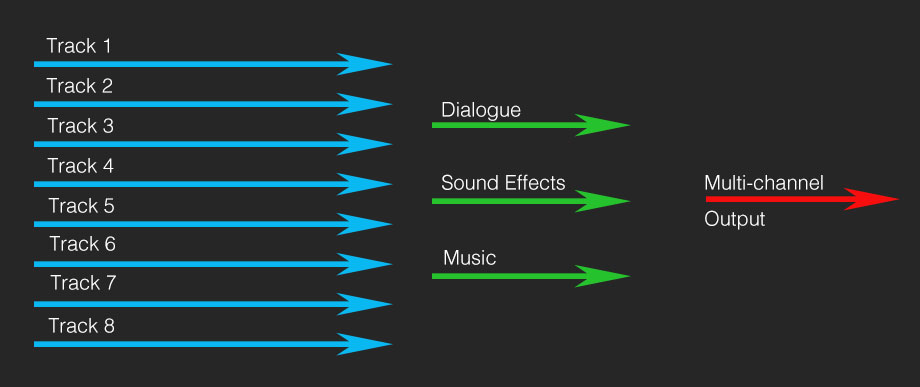1.03 – Launching Premiere Pro; 1.04 – New Project Window; 1.05 – Simplified Workspace; 1.06 – Mac vs PC (preferences) 1.07 – Import Media; 1.08 – Basic Editing Workflow; 1.09 – New Sequence From Clip; 1.10 – Rough Cut: Source Monitor; 1.11 – Unlinking and Adding Audio; 1.12 – Navigating the Timeline; 1.13 – Editing on the. Premiere Pro generates new audio files containing the extracted audio, with the word “Extracted” added to the end of the filenames. Break a stereo track into mono tracks The Breakout To Mono command creates mono audio master clips from a clip’s stereo or 5.1 surround audio channels. Ordinarily, all editing functions act on both parts of a linked clip. When you want to work with the audio and video individually, you can unlink them. When you do, you can use the video and audio as though they were not linked; even the clip name.
If you’ve edited audio or video, you’ve probably dealt with the subtle static noise that creeps it’s way into the clip and slowly grates away at your sanity. Nearly every video or audio clip will have some ambient noise added to it, and the noise can ruin a high quality piece of content. Here’s a quick guide on how to remove that noise for crystal clear audio:1. Create a controlled recording environment
This can obviously happen in the form of a dedicated studio, but certainly doesn’t have to be. Many of the most popular podcasts on the internet are recorded in closets, bedrooms, or shared office space.
Regardless of your space, find little hacks like minimizing noise, getting rid of ambient sounds (like air conditioning), or even building a mini recording box.
2. Ensure you’re using the right mic for your situation
We use a cardioid microphone, which is the preferred mic to use when you’ll be recording in an environment that could have uncontrolled noises nearby. Cardoid mics pick up the sounds that are spoken directly into them. This tool is ideal for setups that have the microphone anchored in one spot allowing the speaker to speak directly into it.
3. Use Premier Pro to remove up static noise from your audio.
Ok, here is the good stuff.
Premiere Pro Extract Audio

Adobe Premiere Pro Audio Effects
Even if you do the first two steps correctly, there is a good chance you’ll have static feedback underlying the audio tracks in your video or podcast. Here’s how to use Adobe Premiere Pro to remove that sound from your audio track:
- Open your file and select the specific audio clip that has the static (note: if you have multiple clips, you’ll need to do each of them separately).
Adobe Premiere Pro Audio Problems

- With your clip selected, go toEffects > Obsolete Audio Effects > DeNoiser (Obsolete). A prompt will appear asking if you want to use a newer effect rather than DeNoiser. Deny this option.
- Drag the selected DeNoiser effect onto the clip you need the static removed from. Once you have, go to the Effect Controls > DeNoiser > Reduce Noise By and slide the effect until you notice the static move away. Depending on the clip, I typically find a sweet spot between 6-9 decibels.
Adobe Premiere Pro Audio
We use the DeNoiser rather than the updated Adaptive Noise Reduction effect because the latter has a strange buffer that leaves the static in for the first second or two of your clip. The DeNoiser clip may be outdated, but it works thoroughly. Once complete, you should notice a distinctly clear audio clip without any annoying static muddling the sound quality.
Hopefully, this is a helpful tutorial. Feel free to reach out with any questions or concerns and happy editing!


LET'S GET STARTED
Our team is always ready to brainstorm and offer support as you grow your B2B brand.
